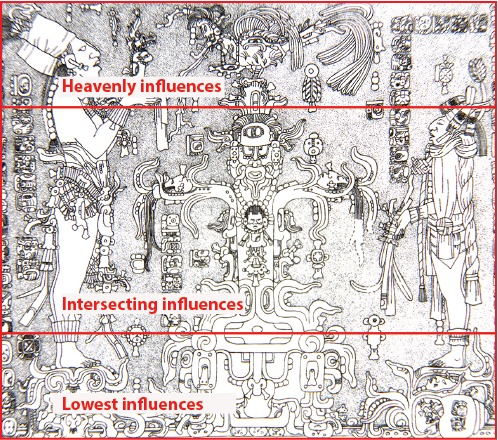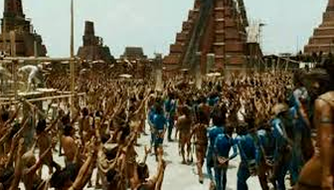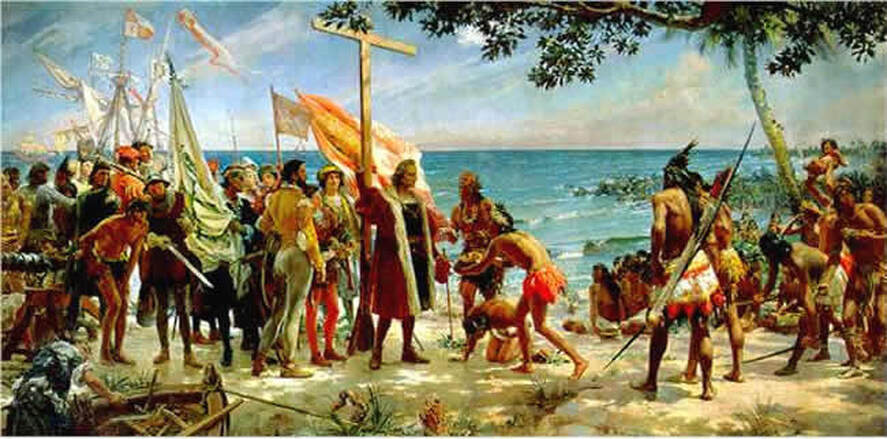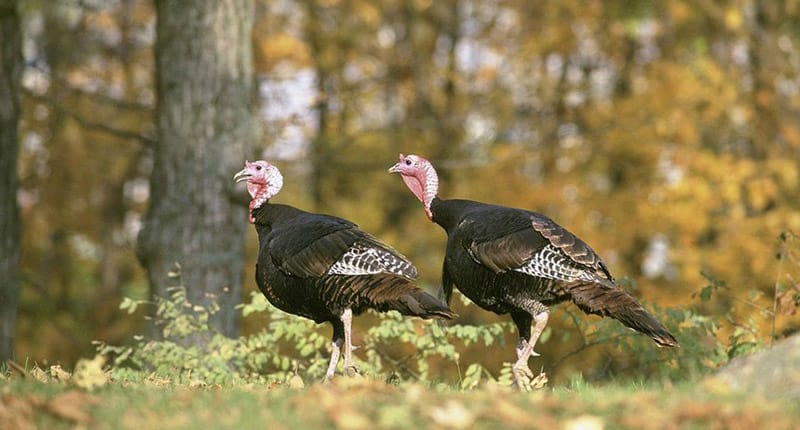|
The ancient Mayan civilization flourished in the steamy jungles of present-day southern Mexico, Belize, and Guatemala. The ancient Maya classic age (the peak of their culture) occurred between 300 and 900 A.D. before they went into a mysterious decline. The Maya culture has always been a bit of an enigma, and even the experts disagree on certain aspects of their society. Across Belize today, you can find sprawling ancient cities with towering pyramids, ball-courts, saunas, monumental sculptures, and enigmatic hieroglyphs—all thanks to the Maya. From the Yucatan in the north to Honduras in the south, Belize in the east, and Mexico City in the west, the ruins of Meso-America (many of which are over a thousand years old) continue to intrigue and fascinate archaeologists and researchers worldwide. In an attempt to help you decipher the profound history of the Mayans, we piece together astonishing facts about the Mayans - a civilization that developed its own written language, architecture as well as mathematical and astronomical system. Here are 30 intriguing things, I bet you didn't know about this ancient civilization. 1. Their Pyramids & Cities are Still Being Discovered. It’s amazing to think that something as large as a pyramid could elude archaeologists today. But it was only a few years ago that a Maya pyramid was even discovered. Hidden under what many thought was a natural hill. Underneath one natural hill, was actually Mexico's tallest pyramid at 246 feet in height, surpassing the 213-foot Pyramid of the Sun at Teotihuacan. 2. They Had Kings & Royal Families. Each major Mayan city had a king (or Ahau). The Maya rulers claimed to be descended directly from the sun, moon, or planets, which gave them divine ancestry. Because he had the blood of gods, the Ahau (king) was an important conduit between the realm of man and the heavens and underworld, and often had key roles in ceremonies. The Ahau (king), was also a wartime leader, expected to fight and play in the ceremonial ball game. When the Ahau (king) died, rulership generally passed to his son, although there were exceptions. There was even a handful of queens ruling mighty Mayan city-states. 3. Studies Show, Ancient Mayan Civilizations Were Huge. While the studies and facts about the Mayans are indicative of a vast and flourishing civilization, it is unclear how an empire such as theirs declined. Many of the great cities were abandoned before the Spanish discovered the ruins. The exact knowledge (of the Mayan civilization remained a mystery to the conquistadors. Research shows, that each city may have housed well over 100,000 inhabitants. Many scholars believe the reason behind the decline, has to do with such factors as drought, famine, climate and over population. 4. They Had a Complicated System of Hieroglyphs. Mayan writing, which dates to the late Preclassic period (300 BCE to 100 CE), is preserved on buildings, stone monuments, rare books, and pottery. While words in the English language are formed with combinations of 26 letters, written Mayan words are formed from various combinations of more than 800 hieroglyphs, each representing a syllable. The system is thought to be the most sophisticated of its kind in Meso-America. Only in the last few decades have they gained the ability to read the glyphs. 5. An Archaeologist Accidentially Cracked Mayan Handwriting. Tatiana Proskouriakoff, a Siberia-born American and trained architect, couldn't find a job in her field. So she started sketching for a curator at Penn Museum in Philadelphia in the 1930s. She was invited on an expedition to the Piedras Negras (a Maya site in Guatemala). She was the first to recognize that the Mayas' "upended frog" glyph represented birth and that their “toothache” glyph represented the date the king ascended to the throne, which led to the identification of birth and death announcements, as well as the names of the rulers for a Maya dynasty. 6. The Maya Wrote Books & The Europeans Burned Them. The Maya wrote books in their elaborate hieroglyphic script on long strips of durable paper made from the inner bark of fig trees. But there are just three Maya codices that survive today: the Dresden Codex, the Madrid Codex, and the Paris Codex. (There’s also the fragmentary Grolier Codex, but scholars dispute its authenticity.) Not all of the Maya were literate, as the books seem to have been produced and used by the priest class. Many of the books fell victim to the damp conditions of Meso-America, others were destroyed by the arrival of Europeans. Diego de Landa, a Franciscan priest from Spain (in Yucatan in the 1540's, describes), “We found a large number of books in their letters (superstition & lies of the devil), we burned them all", which we later regretted. 7. The Mayans Were the First Civilization Recorded, to Use the Number "0". Perhaps the only ones civilization (outside the Babylonian system), are the Maya's. It is believed that they are the first recorded civilization to have used the number 0, as a place holder. 8. Their Calendars Were Complex. There was a lot of talk in certain paranoid corners on the Internet that doomsday, was predicted by the Maya calendar, as being December 21, 2012. This was the date that their "Long Calander" ended after 5,125 years. This calendar was impressive because it used zero as a placeholder—one of the earliest uses of zero as a mathematical concept in history. Was this the only calendar the Maya used? No, they also had a 260-day sacred calendar (called Tzolk’in), which was used to plan religious ceremonies, as well as a 365-day solar calendar known as the Haab'. 9. They Didn't Think the World Would End in 2012? As December of 2012 approached, many people noted that the Maya calendar would soon end. It’s true, as the Maya calendar system was complicated. To make a long story short, it reset to zero on December 21, 2012. This led to all sorts of speculation, from a new coming of the Messiah to the end of the world. The ancient Maya, however, did not seem to worry much about what would happen when their calendar reset. They may have seen it as a new beginning of sorts, but there is no evidence that they predicted any disasters. El Mirado & Tikal are both in Central America 10. The Mayan People Built Impressive Stone Pyramids as Temples to Their gods. It is believed that their impressive pyramid structures (built over 2,000 years ago), during the middle of America (aka Meso-America), were built in honor to their gods. These temples aided them in their worship, and many of these temples stand as a historial reminder (for us today), of a society that once existed. 11. They Saw Their Gods in the Sky. The Maya were obsessive astronomers who kept very detailed records of the movements of the stars, sun, moon, and planets. They kept accurate tables predicting eclipses, solstices, and other celestial events. Part of the reason for this detailed observation of the heavens was that they believed that the sun, moon, and planets were gods moving back and forth between the heavens, the underworld (Xibalba), and the Earth. Celestial events such as equinoxes, solstices, and eclipses were marked by ceremonies at Maya temples. 12. They Were Highly Spiritual People, and Worshiped a Variety of gods. The Mayan people were very spiritual people. They worshiped a complex pantheon of deities and gods. They believed that some of these gods, could transform themselves into human and animal species. Here's what we know about their gods:
13. They Believed In Three (3) Worlds (Heaven, Earth, Underground). Mayan's believed in the concept of three (3) different worlds (1) heaven, (2) earth, (3) the underworld. This is represented by a giant world tree. 14. Their Bible Still Exists. Today, experts lament how so little is known about the Maya today, and how this entire culture has been lost. Yet one remarkable document that has survived is the Mayan Bible (Popol Vuh). This sacred book describes the creation of mankind and the story of Hunahpu and Xbalanque, the hero twins, and their struggles with the gods of the underworld. The Popol Vuh stories were traditional ones, and at some time a Quiché Maya scribe wrote them down. Sometime around 1700 A. D., Father Francisco Ximénez borrowed that text, which was written in the Quiché language. He copied and translated it, and although the original has been lost, Father Ximénez’s copy survives. 15. They Were More Violent than Originally Thought. The traditional view of the Maya was that they were a peaceful people, content to gaze at the stars and trade with one another for jade and pretty feathers. That was before modern researchers deciphered the glyphs left behind on the statues and temples. It turns out that the Maya were as fierce and warlike as their later neighbors to the north, the Aztecs. Scenes of wars, massacres, and human sacrifices were carved into stone and left behind on public buildings. The warfare between city-states got so bad, that many believe that it had much to do with the eventual decline and fall of the Maya civilization. 16. They Painted Human Sacrifices Blue. The Maya cities fought frequently with one another and many enemy warriors were taken captive. These captives were usually enslaved or sacrificed. High-level captives such as nobles or kings, were forced to play in the ceremonial ball game against their captors, re-enacting the battle they lost (afterwards sacrificed). The vivid pigment known as Maya Blue has long fascinated archaeologists because it’s incredibly resilient, surviving for centuries on stone monuments even in the harsh conditions of Meso-American jungles. But this cheerful color was also used to identify those who would be sacrificed. When the Maya wanted to please the rain god, they painted human sacrifices blue. 17. They Played Extreme Sports. The Maya played a game known as Pitz, on ballcourts. Players would try to pass a heavy rubber ball (about the size of a soccer ball) without using their hands while wearing equipment to protect their ribs, knees and arms. The ultimate goal was to get the ball through a very high stone hoop. Playing the sport wasn’t exactly a pastime, but rather an important ritual, and losing could mean death.  18. They Had Pretty Intense Beauty Regimens. The Maya were not content with simply donning clothes and makeup to make themselves beautiful. In childhood, males and females alike had their head bound to artificially deform their skulls into an elongated shape, which probably signified their social status. The Maya also drilled holes into their front teeth and inlaid them with jade, pyrite, hematite or turquoise. They basically invented the grill.  19. They Took Ritual Enemas. For the Maya, consuming hallucinogens and intoxicants were the best way to talk to spirits. They drank substances like balché, which was made with fermented (and possibly psychedelic) honey. But to get inebriated more quickly, and perhaps to avoid vomiting, they may have administered alcohol and psychoactives through the rectal route. There are a lot of scenes on Maya pottery depicting enemas in a ritual context. Researchers investigating the effects of an ancient ritual enema in the 1980s did some self-experimentation and tried it out for themselves, and reported that their results “certainly support the theoretical suggestion that alcohol is absorbed well from an enema.” 20. They Traded Extensively. Trade made up a big part of the Mayan way of life. The Mayan people were keen traders and merchants and had trade networks from Mexico throughout Central America. They traded for two sorts of items: prestige items and subsistence items. The subsistence items included basic necessities (like food, clothing, salt, tools, and weapons). Prestige items were things coveted by the Maya that were not crucial to daily life (for example: bright feathers, jade, obsidian, and gold). The ruling class treasured prestige items and some rulers were even buried with their possessions, giving modern researchers clues into Mayan life and who they traded with. 21. The Mayan Culture & Tranditions. The Ancient Maya civilization may have fallen into decline a thousand years ago, but they still existed when Spanish conquistadors arrived in the early 1500s. Like other American peoples, they were conquered and enslaved, their culture erased, their books destroyed. The Maya people proved more difficult to assimilate than most. For 500 years, they fought hard to maintain their culture and traditions. In Guatemala and parts of Mexico and Belize, there are still ethnic groups who hold fast to their traditions, language, dress, and the religion of their ancestors. 22. They Had a Complex Study of Mind, Body, Science, Rituals & Religion. The Mayan people were very intelligent. They had a complex way of studying the mind, body, science, rituals, religion, and medicine as to how to treat ailments. Scholars believe the Mayans administered critical medical treatments with the help of hallucinogenic drugs. 23. They Appreciated a Good Sweat. The Maya built sauna-like structures out of stone or adobe that were used for health purposes and ritual cleansing. Sweat houses have been found at various Mayan sites such as, Tikal (in Guatemala) and Hoya de Ceren (a Maya village in El Salvador), buried in volcanic ash around 600 CE. The earliest known sweat-bath was uncovered at Cuello, in northern Belize. At 3,000 years old, it predates the famous bath houses of the ancient Roman empire. 24. They May Have Domesticated Turkeys. Turkey's were first domesticated by the Maya. Turkeys weren’t just used for food; the Maya's also kept them for bird parts like bones and feathers, to create fans, tools, and musical instruments. Mexican turkey bones dating to the Preclassic Maya period were discovered at the archaeological site of El Mirador in Guatemala. This location was well outside of the species’ range in the wild, leading archaeologists to conclude that the Maya had domesticated turkeys by this point. 25. They Were Chocolate Eaters. Over 3500 years ago, the Olmecs of Meso-America became probably the first to realize that with some work you could consume chocolate, but the Maya turned it into an art form. Archaeological evidence suggests the Maya were processing cacao at least 2600 years ago. The chocolate they produced, wasn't anything like the chocolate we eat and drink today. The Maya would mix cacao with water, honey, chili peppers, cornmeal, and other ingredients to make a foamy, spicy drink. Maya art and hieroglyphs suggest drinking cacao was an important part of celebrations and rituals; the Dresden Codex, for example, shows an image of the god of sustenance K'awil holding a vessel with cacao beans. 26. They Had A System For Doing Everything & How to Name Children. Mayan people are extremely organized, and had a system for everything they did (including how to name their children). With each day having a specific name for boys and girls respectively, the Mayans named their children with regards to the day on which they were born. 27. Archaeologists Still Debate Why the Civilization Went Into Decline. The civilization was really hitting its stride at the peak of the Classic Maya period (300 to 660 CE). Things started to decline in the 8th & 9th centuries. Maya cities in the southern lowlands (which once boasted of populations up to 70,000 people), were abandoned. Scientists and archaeologists have pointed to a variety of culprits to explain what happened, including drought, rampant raiding and warfare among Maya city-states, migration to the beach and over population, or perhaps some fatal combination of those things. 28. No One Knows What Happened To Them. In 700 A.D. or so, the Maya civilization was going strong. Powerful city-states ruled weaker vassals, trade was brisk, and cultural achievements such as art, architecture, and astronomy peaked. By 900 A.D., however, the classic Maya powerhouses like Tikal, Palenque, and Calakmul had all fallen into decline and would soon be abandoned. So, what happened? No one knows for sure. Some blame warfare, others climate change, and still other experts claim it was disease or famine. Possibly it was a combination of all of these factors, as the experts can’t seem to agree on one root cause. 29. They Did Not Vanish. Sure, many of the great Maya cities were mysteriously deserted, but the people didn’t disappear. The descendants of the Maya are still around today, many of them living in their ancestral homelands (like Belize & Guatemala), where Maya people actually make up a majority of the population. “Maya” is really an umbrella term for many different indigenous ethnic group who may speak different Mayan languages such as Yucatec, Quiche, Kekchi, or Mopan. 30. Their Artifacts & Monuments Are At Risk. In Guatemala and Belize, locals use the word "huecheros" to refer to people who loot archaeological sites. Illegally excavated vases, statues, and other artifacts from Maya sites have made their way into the illicit antiquities market, and looters’ tunnels destroy archaeological sites in the process. In one striking example, a pyramid was cut in half by looters at the Maya city of Xultun in Guatemala. In some cases, Maya antiquities have been returned to their country of origin. The Denver Art Museum returned a carved wooden doorway lintel to Guatemala in 1998 when the artifact was found to have been taken from El Zotz, a Maya settlement just west of the great city of Tikal.
0 Comments
Your comment will be posted after it is approved.
Leave a Reply. |
Is located on the island of Ambergris Caye, directly across from the Belize Barrier Reef, off the mainland coast of Belize. The property is nestled in a cluster of Australian Pine trees, backed to a littoral jungle, and surrounded by tropical gardens. It's about a one minute walk from the property to the beach, and a 10-15 minute drive from the island airstrip to the property.
We offer one bedroom suites (455 s.f.) of living area to include: livingroom, kitchenette, private bathroom and bedroom. We are also about a one minute walk from one of the best restaurants on the island serving (breakfast, lunch & dinner). Within walking distance you can find: (3) blocks is Robyn's BBQ (4) blocks is 2 fruit stands (5) blocks local grocery store IF YOU'RE COMING TO BELIZE TO............... If you're coming to Belize to dive the Blue Hole, descend the shelf walls at Turneffe, snorkel the Barrier Reef, explore Mayan ruins, rappel into a cave, kayak along the river through caves, zip line through jungle tree tops, hike through a cave to see an ancient human skeleton, swim with sharks, listen to Howler Monkey's, hold a boa constrictor, feed a jaguar, horseback ride through the jungle, canoe through a cave, rappel down a waterfall, sail around an island, enjoy cocktails & dinner to a sunset, climb 130' feet to the top of a Mayan ruin, rip up the jungle trails on an ATV, float through a series of caves on a tube, and sip on a rum punch..... then this is the place for you. Belize Budget Suites, offers you clean, affordable, attractive, accommodations, at prices that allow you to do all the things just mentioned. Archives
February 2021
Categories
All

For All Your Home Improvement Needs

For all Your Real Estate Needs
501-226-4400 10 Coconut Dr. San Pedro, Belize Your Ad Could Go Here
|




































 RSS Feed
RSS Feed























